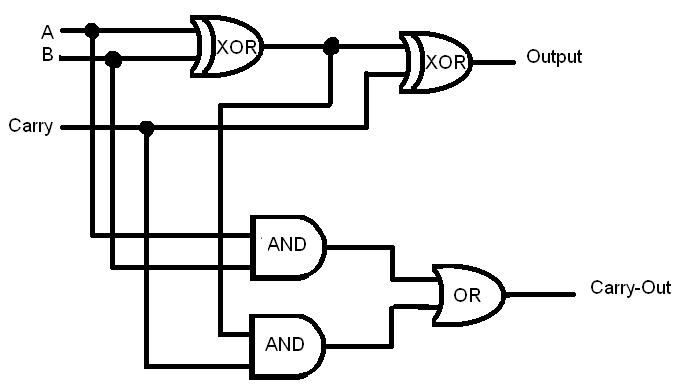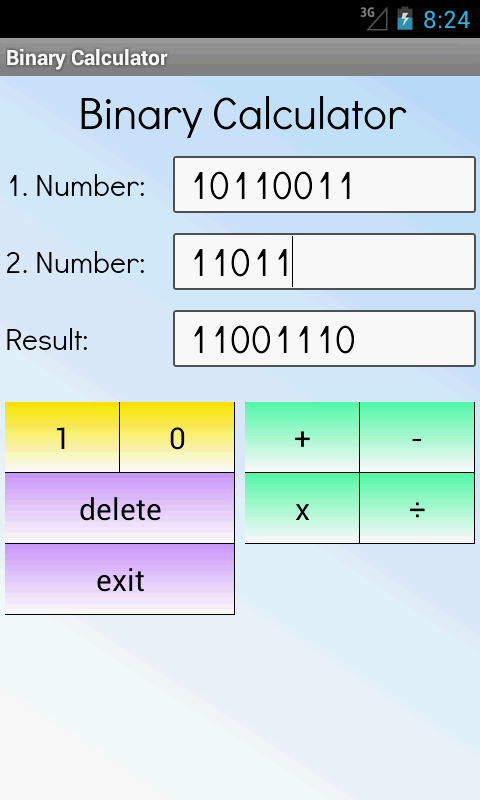Binary Calculator; Now Easily Get the Binary Answers!
This calculator is utilized to perform double math operations like expansion, subtraction, duplication and division by entering binary values. The Binary Calculator changes over from decimal to equivalent numbers and the other way around. Enter a quality into the Binary Calculator to change over into or from double code!
Binary Calculator
This is a subjective accuracy paired calculator, which is open to do any sort of binary computation. It can work on whole numbers and little fragmentary qualities and blends of both.
This calculator is, by outline, extremely straightforward. You can utilize it to investigate paired numbers in their most essential structure. It works on "unadulterated" paired numbers, not PC number arrangements like two's supplement or IEEE twofold skimming point.
The Binary Calculator, making up some piece of our Maths Calculators accumulation, can change over decimal numbers into twofold numbers. Just enter a twofold or a decimal number into the suitable field and the Binary Calculator will instantly change over the quality.
How Binary Calculator work?

The Binary Calculator goes about as a Decimal to Binary Converter. The transformation in the middle of decimal and binary values is exceptionally entangled to execute physically, which is the reason the Binary Calculator offers a significantly more dependable method for Binary Conversion. To utilize the free Binary Calculator, you basically need to fill in the proper fields with the qualities you need to change over into or from decimals and double. Subsequent to squeezing the ascertain catch, the changed value will be given in either Binary or Decimal format.
The most effective method to Use The Binary Calculator
Input

- Enter one operand in every case. Every operand must be a positive or negative number without any commas or spaces, not communicated as a part, and not in exploratory documentation. Fragmentary qualities are demonstrated with a radix point ('.', not ','), and negative numbers are prefixed with a short sign ("- ").
- Select an operation (+, –, *, /).
- Change the quantity of bits you need to show in the double result, if unique in relation to the default (this applies just to division, and after that just when the answer has an interminable fragmentary part).
- Click "Compute" to perform the operation.
- Click "Clear" to reset the structure and begin sans preparation.
Would you like to change an operand, just type over the first number and Click "compute". There is no compelling reason to Click "clear" first. Correspondingly, you can change the operator and keep the operands as it may be.
Output
Other than the consequence of the operation, the quantity of digits in the operands and the outcome is shown. For instance, when figuring 1.1101 * 111.100011 = 1101.1010110111, the "Number Digits" box shows "1.4 * 3.6 = 4.10". This implies that operand 1 has one digit in its whole number part and four digits in its fractional part, operand 2 has three digits in its whole number part and six digits in its fragmentary part, and the outcome has four digits in its number part and ten digits in its partial part.

Expansion, subtraction, and augmentation dependably create a limited result, but division might (indeed, much of the time) deliver a boundless (rehashing) partial quality. Endless results are truncated — not adjusted — to the predefined number of bits. Vast results are noted with an ellipsis (…) affixed to the outcome, and with a "∞" image as the quantity of partial digits. For divisions that speak to dyadic parts, the outcome will be limited, and showed in full accuracy — paying little respect to the setting for the quantity of fragmentary bits.
For instance, 1/1010 to 24 partial bits is 0.000110011001100110011001…, with "Number Digits" = "1.0/4.0 = 0. ∞"; 11/100 = 0.11, with "Number Digits" = “2.0 / 3.0 = 0.2”.